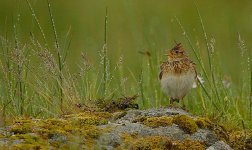Capercaillie71
Well-known member
I recently found a reference to this subspecies of skylark, presumably inhabiting Scotland. I was unaware that our skylarks were considered to be different from everyone else's. It seems strange, particularly as Scottish skylarks are not particularly geographically isolated. Does anyone know what the justification for this subspecies is?






